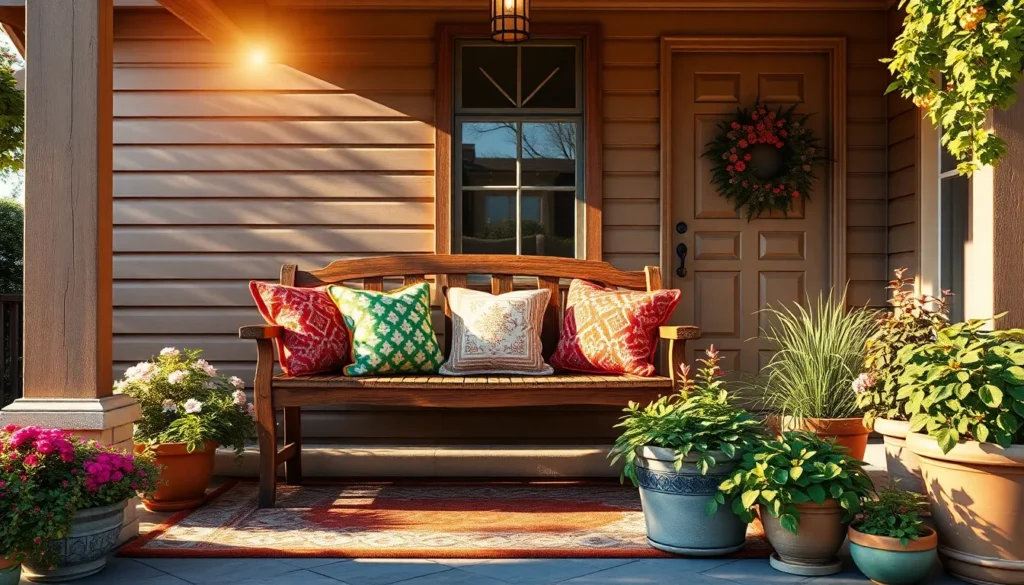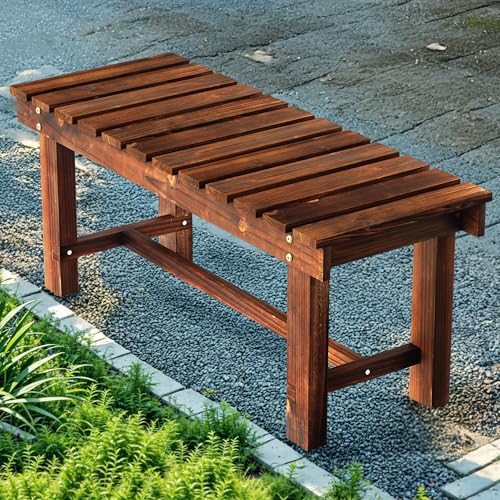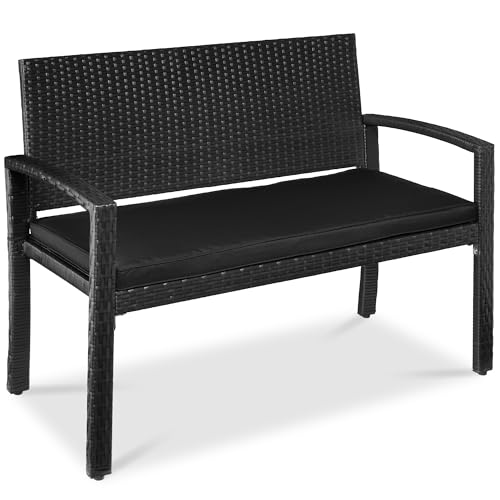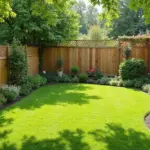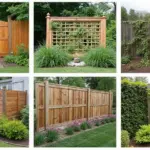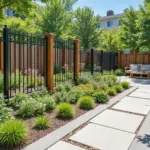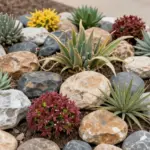We’ve all dreamed of that perfect front porch where we can sip morning coffee or watch the sunset after a long day. A well-chosen bench transforms your porch from a simple entryway into a welcoming outdoor retreat that boosts your home’s curb appeal and creates a cozy gathering spot for family and friends.
The right front porch bench doesn’t just provide seating – it sets the tone for your entire home’s exterior design. Whether you’re working with a sprawling wraparound porch or a compact stoop, there’s a bench style that’ll perfectly complement your space and lifestyle.
From rustic wooden designs that exude farmhouse charm to sleek modern pieces that make a bold statement, we’ll explore creative bench ideas that’ll transform your front porch into the neighborhood’s most inviting entrance. Let’s discover how the perfect bench can become your home’s signature feature while providing years of comfort and enjoyment.
Choose the Perfect Material for Your Front Porch Bench
Selecting the right material determines both the longevity and aesthetic appeal of your front porch bench. We’ll guide you through the most popular material choices to help you make an well-informed choice that complements your home’s style.
Wood Options for Classic Appeal
Teak stands as the premium choice for outdoor furniture due to its natural oils that resist weather damage and insects. We recommend teak benches for homeowners seeking a long-term investment, as they can last 20-30 years with minimal maintenance. Cedar offers excellent weather resistance at a more affordable price point than teak. Pine provides the most budget-friendly option but requires annual staining or sealing to prevent rot and insect damage.
Hardwood varieties like oak and mahogany deliver exceptional durability while maintaining traditional charm. We’ve observed that properly maintained hardwood benches can withstand decades of outdoor exposure. Pressure-treated lumber costs significantly less than hardwood options while still offering decent weather resistance. Composite wood materials combine recycled wood fibers with plastic polymers to create maintenance-free alternatives that won’t crack, splinter, or fade.
Metal Benches for Modern Durability
Aluminum benches resist rust completely and weigh considerably less than steel alternatives, making them easy to move and reposition. We recommend powder-coated aluminum for enhanced color retention and scratch resistance. Cast iron provides classic Victorian styling but requires regular maintenance to prevent rust formation. Steel options offer exceptional strength and can support heavier weight loads than other materials.
Wrought iron creates elegant curved designs that add sophisticated appeal to traditional home styles. We suggest applying rust-resistant primer and paint every 2-3 years to maintain wrought iron benches. Galvanized steel coating protects against corrosion and extends the lifespan of metal benches significantly. Stainless steel delivers the ultimate durability but comes with a higher price tag than other metal options.
Wicker and Rattan for Natural Charm
Natural rattan brings tropical elegance to front porches but requires protection from direct sunlight and moisture to prevent cracking. We recommend placing natural rattan benches in covered porch areas for optimal longevity. Synthetic wicker materials replicate the appearance of natural fibers while offering superior weather resistance and UV protection. Resin wicker withstands rain, snow, and temperature fluctuations without deteriorating or losing its shape.
All-weather wicker incorporates high-density polyethylene that won’t fade, crack, or peel under harsh outdoor conditions. We’ve found that synthetic wicker benches maintain their appearance for 5-7 years without important maintenance. Bamboo alternatives provide eco-friendly options that grow rapidly and offer natural antimicrobial properties. Rattan cores wrapped with synthetic materials combine authentic texture with modern durability for the best of both worlds.
Consider Size and Scale for Your Porch Space
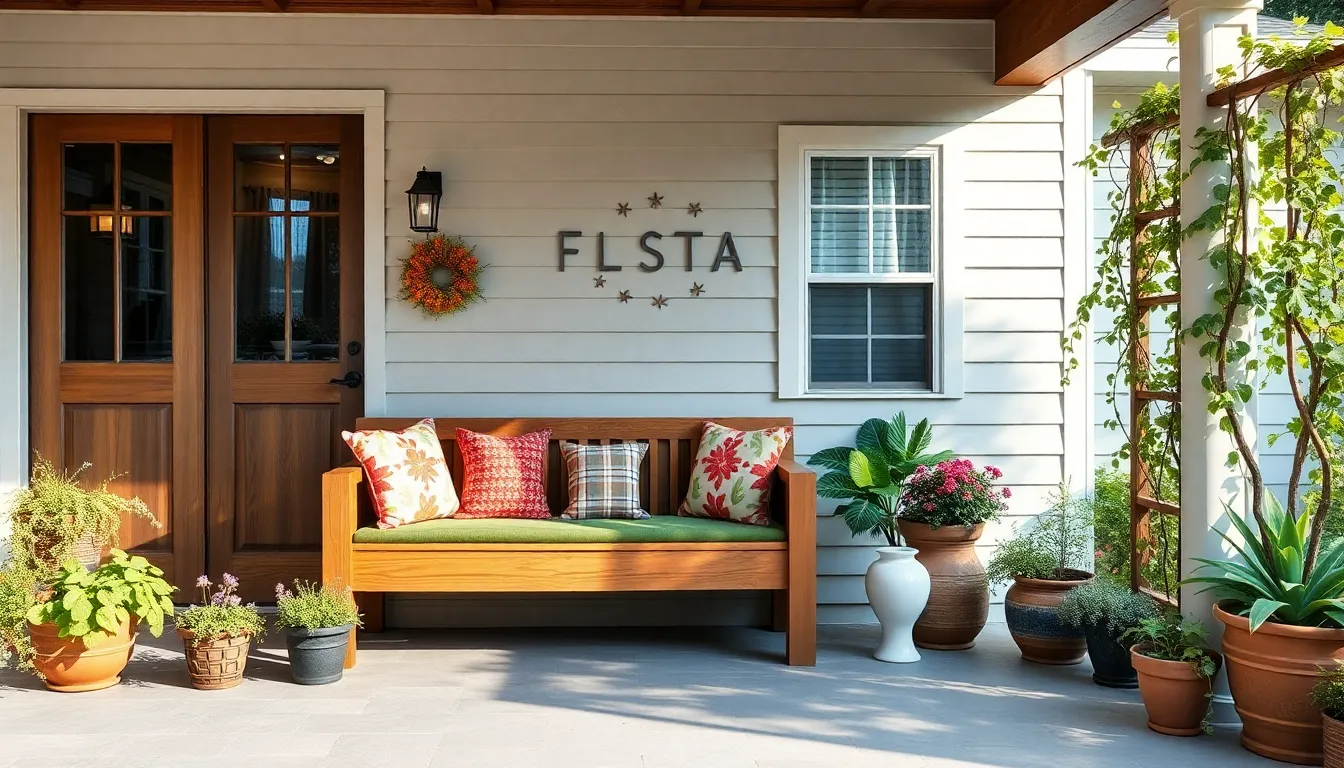
Getting the proportions right ensures your bench enhances rather than overwhelms your outdoor space. We’ll help you create perfect harmony between your seating choice and porch dimensions.
Measuring Your Available Porch Area
Accurate measurements form the foundation of smart bench selection and prevent costly sizing mistakes. Start by measuring your porch’s length, width, and depth to understand exactly how much space you’re working with. We recommend leaving at least 3 feet of walkway space to ensure comfortable movement around your bench.
Calculate the usable seating area by subtracting space needed for doors, railings, and other porch features. Consider how the bench will interact with existing elements like columns, planters, or decorative features. Document these measurements before shopping to avoid purchasing a piece that crowds your space or looks lost on a large porch.
Plan for additional elements that’ll enhance your seating area’s functionality and appeal. Account for space needed for side tables, planters, or decorative accessories that’ll complete your porch design. This comprehensive approach prevents overcrowding while ensuring your bench fits comfortably within the overall layout.
Matching Bench Proportions to Porch Style
Rustic modern benches crafted from durable acacia wood offer clean lines and geometric bases that blend rustic charm with contemporary minimalism. These pieces work perfectly for farmhouse or transitional porch styles where you want warmth without sacrificing sophistication. The natural wood grain adds texture while maintaining sleek proportions that won’t overpower smaller spaces.
Mixed metal and wood benches featuring light wood planks paired with metal scrollwork create elegant contrast for traditional or eclectic porch designs. The combination of materials adds visual interest while providing sturdy construction that withstands weather exposure. These benches typically work well on medium to large porches where their detailed craftsmanship can be properly appreciated.
Strategic accessories and decor elements soften your bench’s appearance while adding comfort and curb appeal. Scatter cushions and weather resistant pillows in coordinating colors create inviting seating that matches your home’s exterior palette. Large potted palms or hanging planters with trailing vines frame the bench naturally and enhance privacy for a cozy nook effect.
Vertical garden panels or trellises positioned behind your bench enrich the visual backdrop with lush greenery that complements any bench style. These elements add height and depth to your porch design while creating natural privacy screens. The combination of seating and greenery transforms your porch into a garden retreat that feels both intimate and welcoming.
Select Built-In Bench Designs for Permanent Solutions
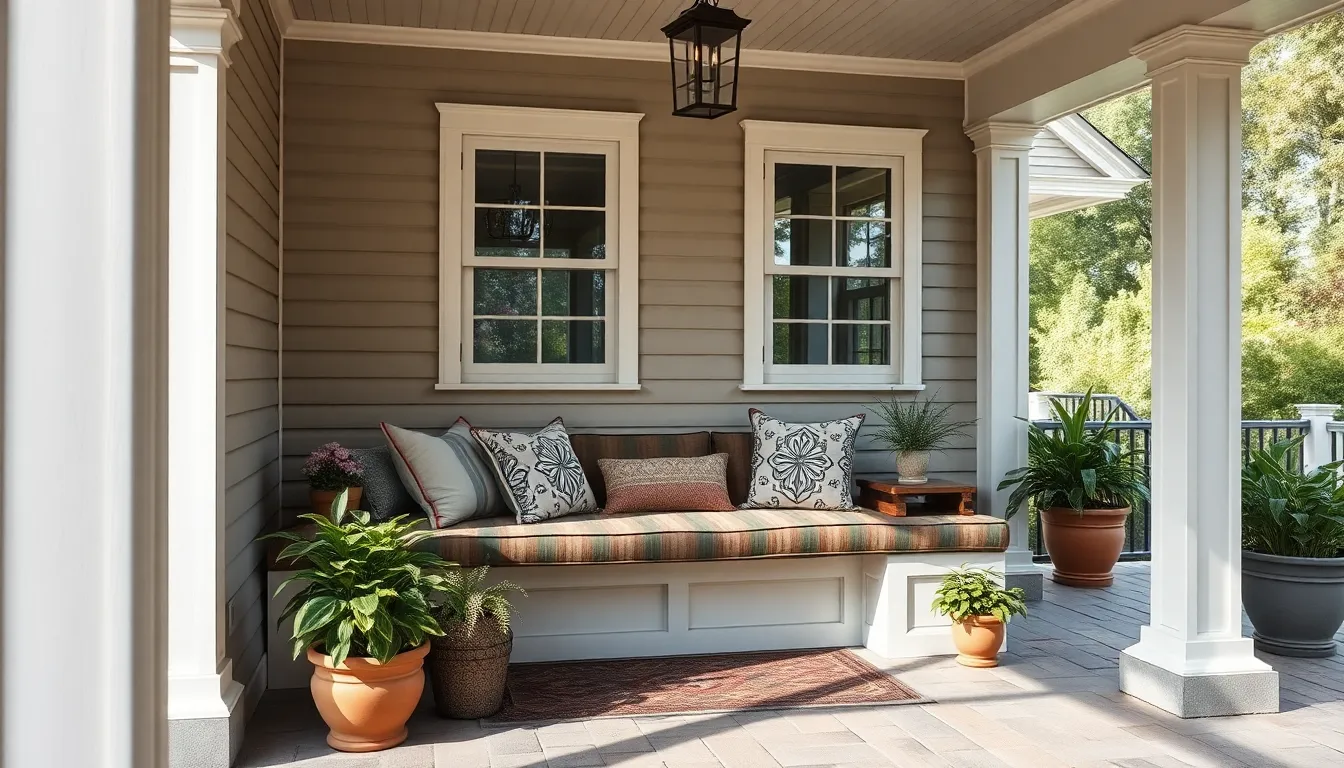
Built-in benches create permanent seating answers that seamlessly integrate with your porch architecture. These fixed installations offer superior space efficiency and can be customized to match your home’s exact style and proportions.
Corner Built-In Benches for Cozy Nooks
Corner built-in benches transform unused porch corners into intimate conversation spaces. These L-shaped seating arrangements maximize seating capacity in compact areas while creating natural gathering spots for family and guests. We’ve found that corner benches work particularly well on smaller porches where every square foot matters.
Corner installations foster cozy atmospheres that encourage relaxation and meaningful conversations. The angled design naturally brings people closer together, making these spaces perfect for morning coffee or evening chats. You can enhance comfort by adding weather-resistant cushions and decorative pillows that complement your porch’s color scheme.
Storage compartments beneath corner benches provide hidden space for outdoor cushions, gardening tools, or seasonal decorations. This dual functionality keeps your porch organized while maintaining the clean lines of your built-in design. The permanent nature of these installations means they’ll maintain their appeal season after season.
Full-Width Built-In Seating Options
Full-width built-in benches extend along your porch’s entire front or side, creating dramatic architectural statements. These expansive seating answers accommodate multiple guests while defining your porch’s visual boundaries with clean, continuous lines. We recommend this style for homeowners who frequently entertain or have larger families.
Full-width designs maximize seating capacity without compromising walkway space when properly planned. The bench becomes a prominent design element that can incorporate decorative backs, integrated armrests, or built-in planters at the ends. This comprehensive approach creates cohesive outdoor living spaces that feel intentionally designed.
Weather-resistant materials like cedar, composite decking, or treated lumber ensure your full-width bench withstands seasonal changes. Many homeowners choose to add removable cushions that can be stored during harsh weather, extending both comfort and longevity. The substantial presence of full-width benches also increases your home’s curb appeal and perceived value.
Explore Freestanding Bench Styles for Flexibility

Freestanding benches offer unmatched versatility for front porch seating since they can be easily moved or repositioned to accommodate different needs. We’ll explore three distinct categories that showcase different design philosophies and materials.
Traditional Wooden Garden Benches
Classic wooden benches remain our top choice for creating warm, inviting front porch atmospheres. Wood types like acacia and cedar provide exceptional durability for outdoor use while maintaining natural beauty that complements any home facade. Slatted seats and backs characterize these timeless designs, often featuring simple arms and straightforward construction that makes them perfect for DIY projects.
Traditional garden benches can be left in their natural state to showcase wood grain or painted in colors that match your home’s exterior palette. Their rustic charm fits seamlessly with both farmhouse and classic porch themes, creating welcoming spaces that invite relaxation. We recommend these benches for homeowners who appreciate timeless design and enjoy the option to refinish vintage pieces for a personalized touch.
Modern Metal and Composite Options
Contemporary porch designs benefit from the clean lines and robust construction of modern metal and composite benches. Wrought iron and aluminum frames resist weathering while providing decorative scrollwork or sleek, minimalist aesthetics that suit modern home styles. These materials offer exceptional longevity with minimal maintenance requirements compared to traditional wood options.
Composite benches made from recycled plastics or resin mimic natural wood textures without the upkeep demands. They provide excellent durability for coastal environments where salt air can damage traditional materials. We particularly recommend these options for homes with modern or coastal architectural influences, as they deliver both style and practical benefits for long term outdoor use.
Vintage and Antique Bench Finds
Antique benches bring unique character and historical charm to front porch spaces through their distinctive craftsmanship details. Ornate wooden carvings and intricate wrought iron scrollwork showcase artisanship that’s rarely found in contemporary pieces. These standout focal points create nostalgic appeal that works beautifully with both traditional and eclectic porch decor styles.
Flea markets, estate sales, and online vintage shops offer treasure hunting opportunities for one of a kind bench discoveries. While these pieces may require restoration work, they serve as conversation starters and add personality that mass produced benches simply can’t match. We suggest vintage benches for homeowners who enjoy unique design elements and don’t mind investing time in restoration projects.
Add Storage Solutions with Functional Bench Designs
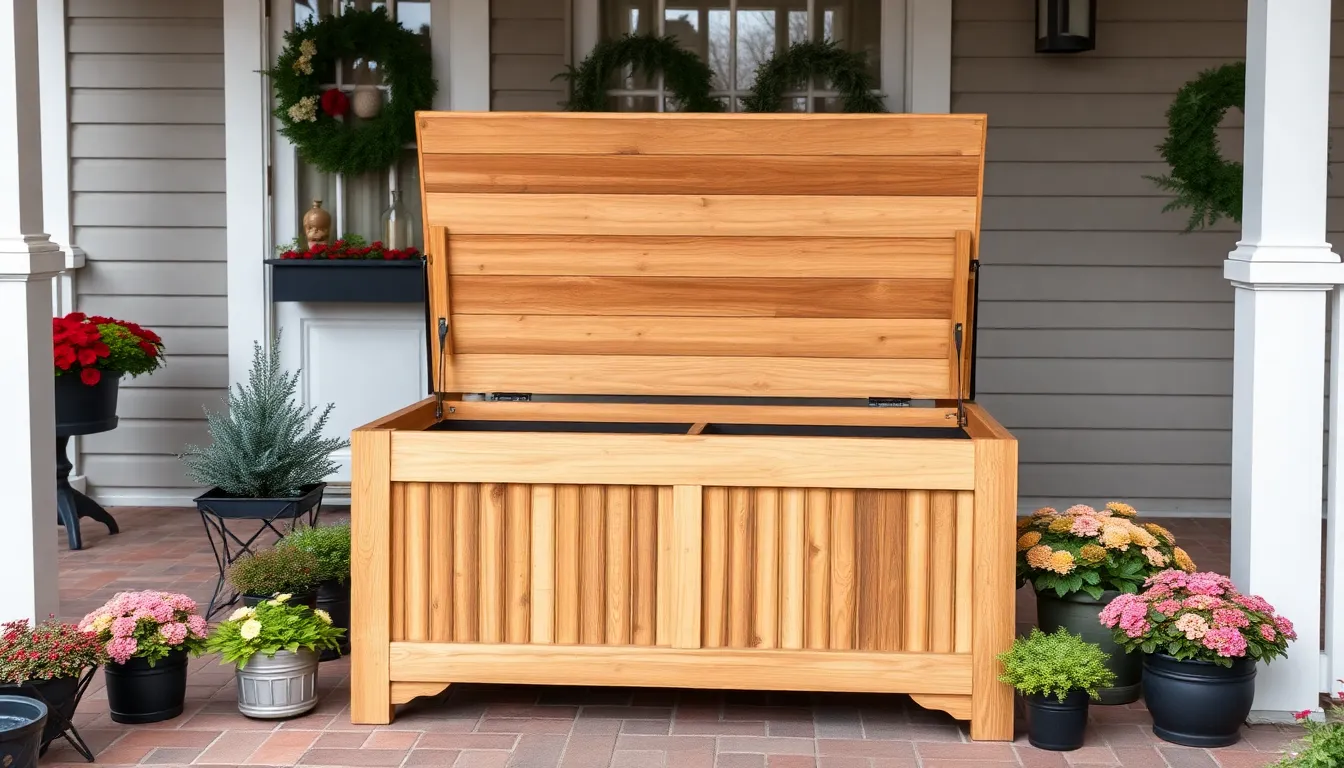
Smart front porch bench designs combine comfortable seating with clever storage compartments to maximize your outdoor space’s functionality.
Lift-Top Storage Benches
Lift-top storage benches transform your front porch seating into hidden storage compartments that keep outdoor essentials organized and accessible. The hinged seat lifts effortlessly to reveal spacious storage underneath, perfect for stashing outdoor cushions, gardening tools, shoes, or seasonal decorations. Weather-resistant materials like treated wood, resin, and composite construction ensure these benches withstand outdoor conditions while maintaining their functionality year-round.
Practical benefits extend beyond simple storage as these benches eliminate porch clutter while providing comfortable seating for guests. We recommend choosing lift-top designs with lockable lids for added security when storing valuable items like garden equipment or outdoor games. Easy access remains a key feature since the storage compartment opens with minimal effort, making it convenient to retrieve frequently used items.
Design versatility allows lift-top storage benches to complement various porch styles, from rustic farmhouse aesthetics to modern minimalist approaches. Spacious compartments accommodate larger items that traditional storage answers can’t handle, such as outdoor cushions during off-seasons or bulky gardening supplies.
Under-Seat Basket Storage Options
Under-seat basket storage creates an organized system for smaller porch essentials while adding decorative appeal to your bench design. Woven baskets or rustic bins slide seamlessly under open-frame bench designs, providing easy access to gardening gloves, toys, pet supplies, or cleaning materials. This storage approach works exceptionally well with wooden benches that feature lower open shelving or spacious clearance underneath the seat.
Customizable organization becomes possible when you select different basket sizes to accommodate various items, from small hand tools to outdoor entertainment supplies. We suggest choosing weather-resistant baskets made from synthetic materials or treated natural fibers that won’t deteriorate from moisture exposure. Sliding functionality ensures baskets move in and out effortlessly, making item retrieval quick and convenient.
Aesthetic enhancement occurs when decorative baskets complement your porch’s overall design theme, whether you prefer coastal wicker styles or industrial metal bins. Dual-purpose functionality means these storage answers keep your porch tidy while serving as attractive design elements that enhance your outdoor space’s visual appeal.
Incorporate Weather-Resistant Features for Longevity
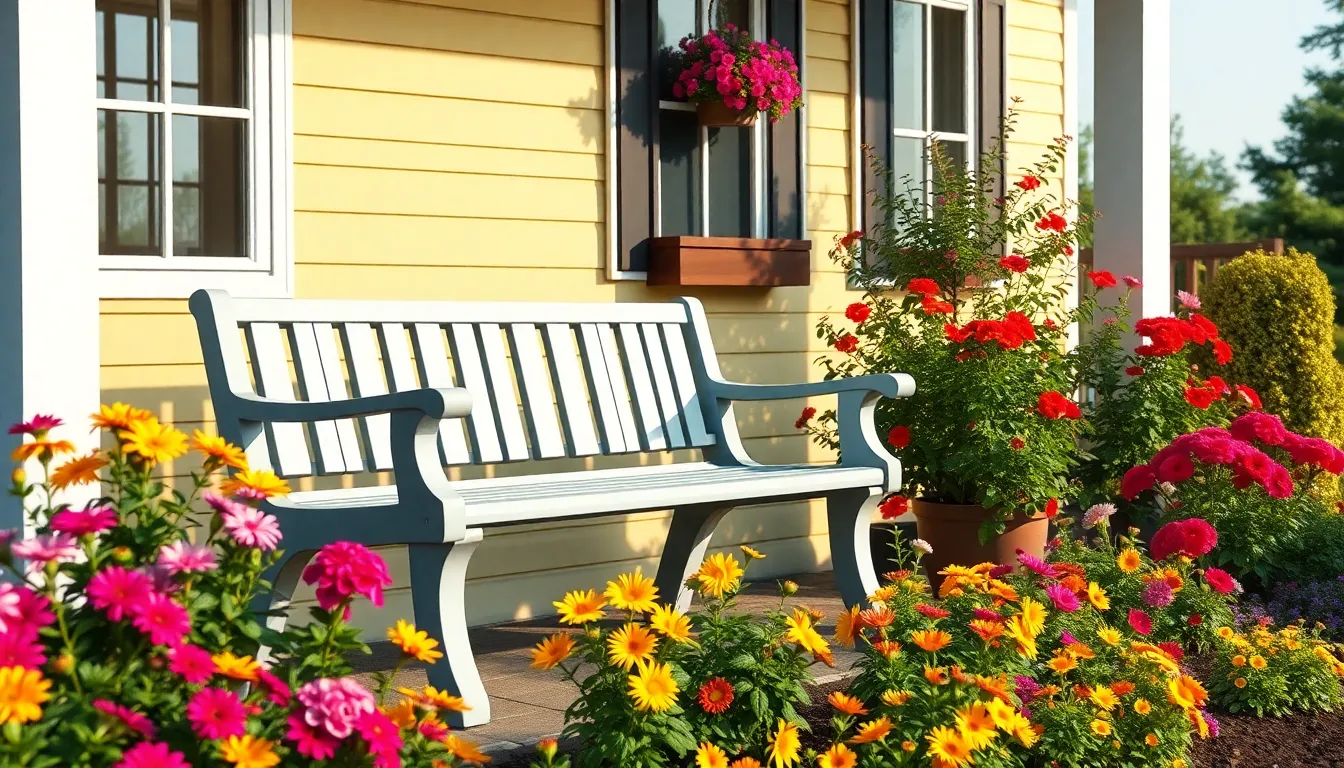
Selecting a front porch bench with weather-resistant features ensures your investment withstands the elements for years to come. The right combination of materials and protective treatments transforms your outdoor seating into a durable centerpiece that maintains its beauty through all seasons.
Choosing Weatherproof Materials
High-density polyethylene (HDPE) plastics lead the way for low-maintenance outdoor seating, with brands like POLYWOOD creating benches that resist rain, snow, wind, and sun exposure without ever needing sanding, painting, or staining[2]. These synthetic materials won’t splinter, crack, or fade, making them perfect for homeowners who want durability without ongoing upkeep.
Metal benches offer exceptional strength and stability when constructed from powder-coated steel or cast aluminum. Aluminum provides lightweight durability that won’t rust, while steel offers maximum sturdiness with proper protective finishes[5]. Both materials maintain their structural integrity through strong UV light and rainstorms when properly treated.
Treated wood benches deliver the warm, traditional aesthetic many homeowners prefer, though they require careful selection and maintenance. Cedar naturally resists moisture and insects, while pressure-treated pine offers affordability with enhanced weather protection[5]. Oak and mahogany provide premium durability but need regular sealing to prevent water damage.
| Material | Weather-Resistance Features | Maintenance | Style Notes |
|---|---|---|---|
| HDPE Plastic | UV resistant, won’t crack or splinter | Minimal (no painting or sanding) | Comes in various colors, natural look |
| Powder-Coated Metal | Rust-resistant coating, durable against UV | Occasional cleaning | Classic to modern designs |
| Treated Wood | Sealed/painted to resist moisture and decay | Periodic sealing/painting | Warm, traditional appearance |
Protective Coatings and Treatments
Powder coating technology creates a durable barrier on metal benches that resists fading, chipping, and rust formation. This electrostatic process bonds protective material directly to the metal surface, providing superior weather resistance compared to traditional paint finishes[1][5]. We recommend powder-coated options for areas with harsh weather conditions or high humidity.
Waterproof sealants and paints extend wooden bench lifespans by creating moisture barriers that prevent rot and decay. Marine-grade polyurethane offers the highest protection level, while semi-transparent stains allow natural wood grain to show through while providing UV protection. Reapplication every 2-3 years maintains optimal protection in most climates.
Rust-fighting materials in hardware and fasteners prevent structural failure at connection points. Stainless steel bolts, galvanized screws, and aluminum brackets ensure your bench stays securely assembled even after years of weather exposure[1]. These details often determine whether a bench lasts 5 years or 25 years.
Drainage-promoting designs like slatted seats and backs allow water to flow through rather than pooling on surfaces, reducing the risk of water damage and extending material life[1][4]. These features help benches dry quickly after rain, preventing moisture-related problems that can compromise structural integrity.
Enhance Comfort with Cushions and Accessories
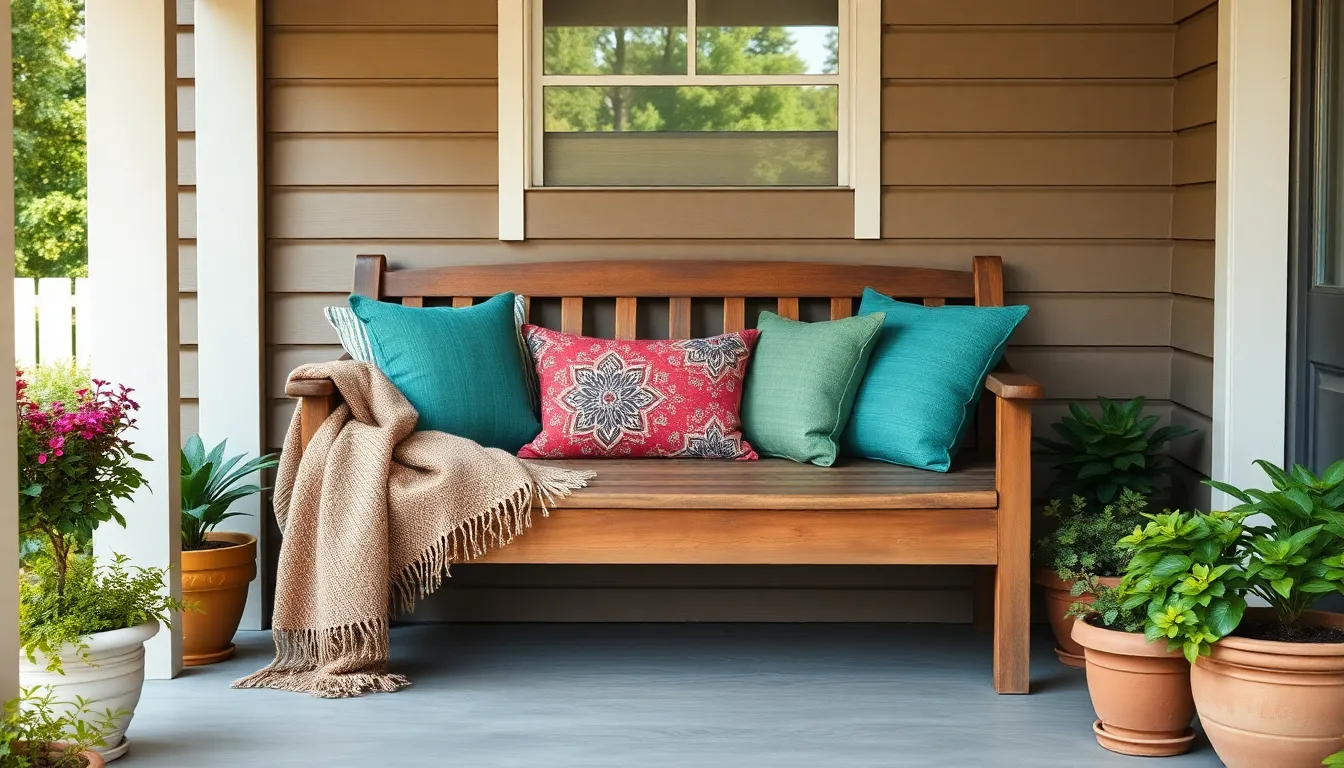
We can transform even the most basic front porch bench into a welcoming retreat by adding the right cushions and accessories.
Outdoor Cushion Selection Tips
Weather resistance should be our top priority when selecting outdoor cushions. Look for cushions specifically designed for outdoor use that resist sun damage, water, and mildew to ensure lasting performance. Materials like acrylic fabric or polyester deliver exceptional durability while maintaining their appearance season after season.
Quick-dry foam makes an ideal cushion core for outdoor applications. Pair this with covers made from solution-dyed polyester or acrylic fabrics for optimal longevity and easy maintenance. These materials prevent moisture buildup and resist fading even under intense sunlight.
Color coordination allows us to tie our cushions into the porch’s overall design theme. Choose neutral tones like beige, gray, or cream for classic styles, while vibrant patterns work beautifully with eclectic setups. This strategic selection adds personality and visual interest to our outdoor space.
Size matching ensures our cushions fit properly on the bench surface. Measure our bench dimensions carefully and select cushions that provide adequate coverage without overwhelming the furniture piece. Properly sized cushions create a polished, intentional appearance.
Throw Pillows and Blankets for Coziness
Throw pillow variety enhances both comfort and visual appeal on our front porch bench. Mix different sizes, shapes, and textures to create depth and interest in the seating arrangement. Pillows with removable, washable covers prove practical for outdoor use and easy maintenance.
Layering techniques help us achieve professional-looking results with our pillow arrangements. Start with larger pillows as a base, then add smaller accent pillows in complementary colors or patterns. This approach creates visual dimension while maintaining comfort.
Outdoor blankets extend the usability of our porch bench into cooler evenings. Select throws made from weather-friendly fabrics that can withstand occasional moisture exposure. Basket storage beneath the bench keeps these cozy additions readily accessible when needed.
Seasonal rotation keeps our porch bench looking fresh throughout the year. Store lightweight summer throws during winter months and bring out heavier textures when temperatures drop. This practice protects our accessories while maintaining year-round appeal.
Create Visual Interest with Color and Finish Options
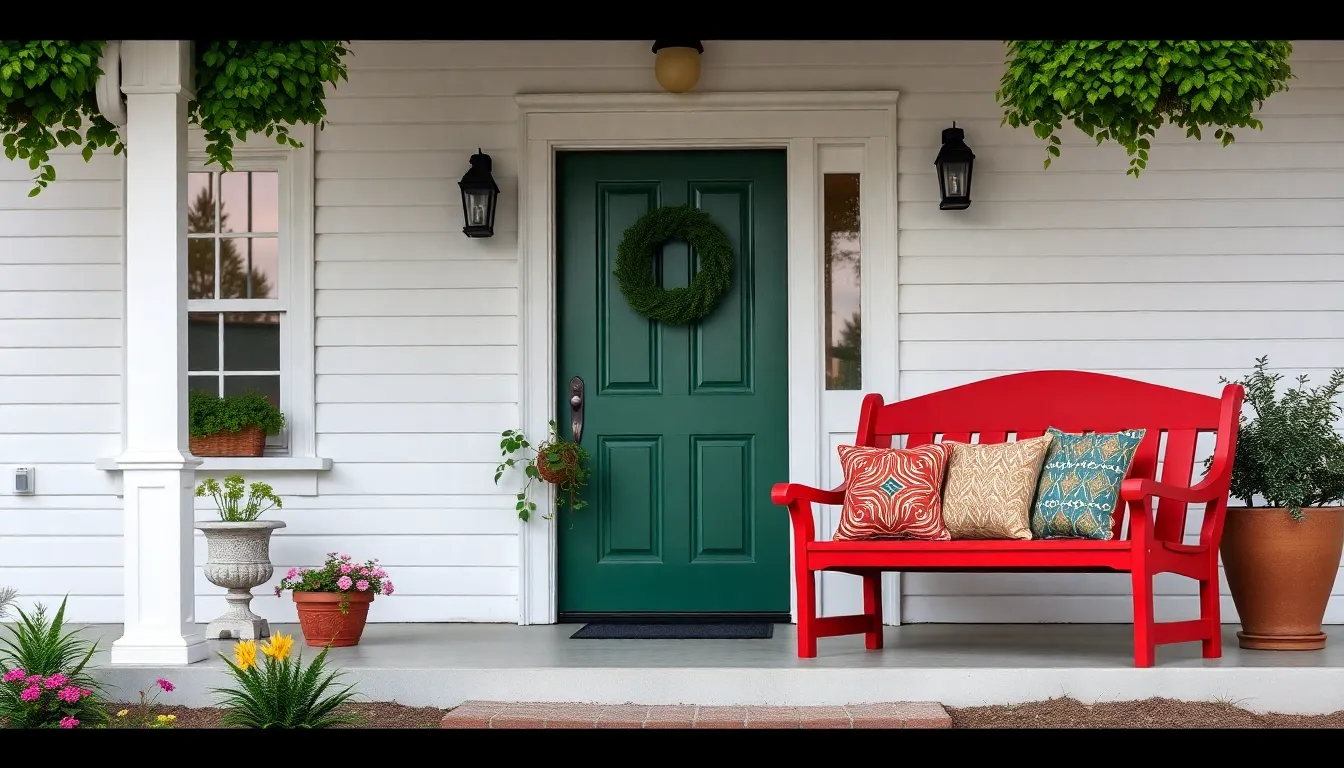
Color and finish choices can transform your front porch bench from a simple seating solution into a captivating focal point. We’ll explore how strategic color selections and finishes can enhance your outdoor space’s visual appeal.
Bold Paint Colors for Statement Pieces
Vibrant hues like bright red, deep navy, or sunny yellow can make your bench stand out as a striking focal point. These statement colors work particularly well for homes with neutral exteriors, creating that perfect pop of color that draws the eye and adds personality to your porch.
Bright red benches command attention and create a welcoming atmosphere that guests notice immediately upon arrival. This bold choice pairs beautifully with white or cream home exteriors, establishing a classic American porch aesthetic.
Deep navy offers sophistication while maintaining visual impact against lighter colored homes. Navy benches complement coastal and traditional architectural styles, creating an elegant contrast that feels both timeless and contemporary.
Sunny yellow brings warmth and cheerfulness to any front porch setting. This energetic color works exceptionally well with gray, white, or natural wood siding, instantly brightening the entire entrance area.
Complementing cushions and pillows in contrasting or coordinating colors enhance the overall effect of your statement bench. We recommend selecting accessories that either match your chosen paint color or provide thoughtful contrast for added visual interest.
Natural Stain Finishes for Timeless Appeal
Natural stain finishes highlight the wood’s grain and texture while offering warm, enduring aesthetics. These finishes create a classic look that transcends trends and complements various architectural styles effortlessly.
Woods like acacia or cedar stained in natural tones blend seamlessly with rustic, farmhouse, or modern outdoor styles. Acacia’s distinctive grain patterns become more pronounced with natural staining, while cedar’s natural oils provide built in weather resistance.
Natural stains pair exceptionally well with other outdoor elements such as stone pathways, brick accents, or surrounding greenery. This harmony creates a cohesive outdoor design that feels intentional and well planned.
Protective coatings such as polyurethane are recommended to guard against weather damage and significantly extend your bench’s outdoor lifespan. These clear protective layers maintain the natural wood appearance while providing essential moisture and UV protection.
Maintenance becomes simpler with natural stain finishes compared to painted surfaces, as minor scratches and wear blend naturally into the wood’s character rather than creating obvious flaws that require immediate attention.
Position Your Bench for Maximum Impact and Function
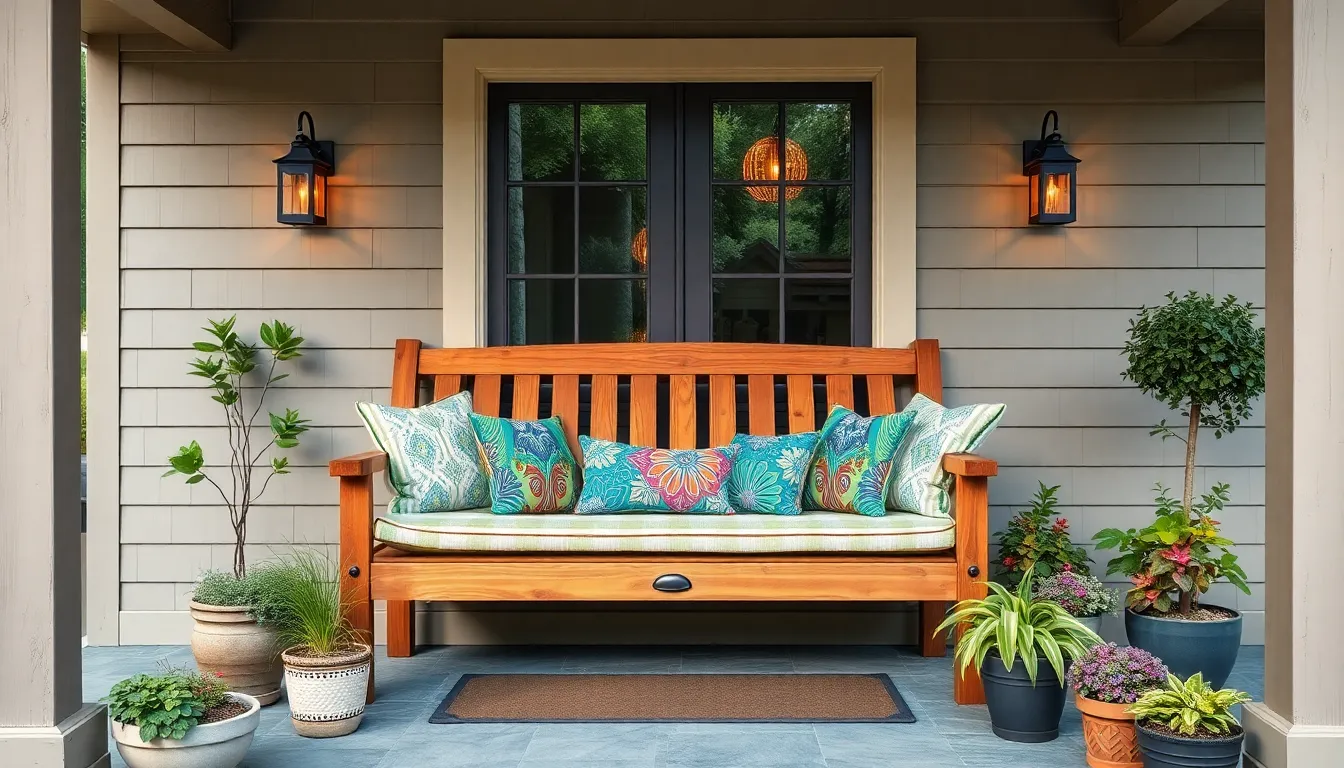
Strategic placement transforms your front porch bench from simple seating into a powerful design element that enhances both curb appeal and daily functionality.
Strategic Placement for Visibility
Place your bench where it’s most visible from the street to create an inviting focal point that draws guests toward your home. Near the front door or along your porch’s longest wall works best to maximize both seating capacity and visual impact. We recommend positioning benches at least 3 feet from walkways to maintain comfortable traffic flow while ensuring the piece remains prominently displayed.
Comfort and Style Balance
Weather-resistant cushions in complementary colors instantly elevate both comfort and visual appeal of your bench placement. Acacia wood benches with geometric cushion designs blend rustic charm with modern aesthetics particularly well. Materials like solution-dyed fabrics resist fading while quick-dry foam prevents moisture buildup during rainy seasons.
Lighting Considerations
Generous lighting around your bench area creates warmth and extends usability into evening hours. Solar sconces flanking the bench or string lights overhead provide ambient illumination that makes the space feel welcoming after dark. LED pathway lights leading to the bench also enhance safety while highlighting your seating area’s importance in the overall porch design.
Creating Conversation Areas
Seating Arrangements
Pair your bench with complementary seating elements like chairs or another bench to foster natural social interaction among guests. Two-seater benches with attached tabletops work exceptionally well for holding drinks and snacks during conversations. Mixed metal and wood benches with scrollwork details add visual interest while providing comfortable seating for extended visits.
Softening Elements
Cushions, throw blankets, and strategically placed potted plants around the bench create an inviting atmosphere that encourages guests to linger. These accessories soften hard surfaces while adding color and texture that makes the conversation area feel more like an outdoor room. Trailing plants in hanging baskets above the bench add vertical interest without blocking sightlines between seated guests.
Scale and Proportion
Select bench styles that complement your porch’s size and architectural features to create balanced conversation zones. Modern minimalist designs work well in contemporary settings while traditional wooden benches suit farmhouse or cottage style homes. We suggest measuring your available space to ensure multiple seating pieces don’t overwhelm the porch or impede foot traffic.
Maximizing Views and Privacy
View Optimization
Position your bench to overlook pleasant views like gardens, tree-lined streets, or natural landscapes that enhance the sitting experience. This strategic placement gives you comfortable vantage points to enjoy surroundings while providing natural entertainment during quiet moments. Corner placements often capture multiple viewing angles while maintaining the porch’s functional layout.
Natural Privacy Screens
Potted plants, climbing vines, and existing porch railings create effective privacy barriers without sacrificing airflow or natural light. Large planters with evergreen shrubs provide year-round screening from neighbors while seasonal flowers add changing visual interest. Trellises with climbing jasmine or morning glories offer fragrant privacy answers that enhance rather than obstruct the bench area.
Orientation Strategy
Angle your bench to face the best available views while maintaining enough open space to keep the porch visually balanced and functionally accessible. Diagonal placement often works better than straight alignment for capturing optimal sightlines. We recommend testing different orientations by temporarily placing chairs in various positions before committing to your final bench placement.
Complement Your Bench with Surrounding Décor
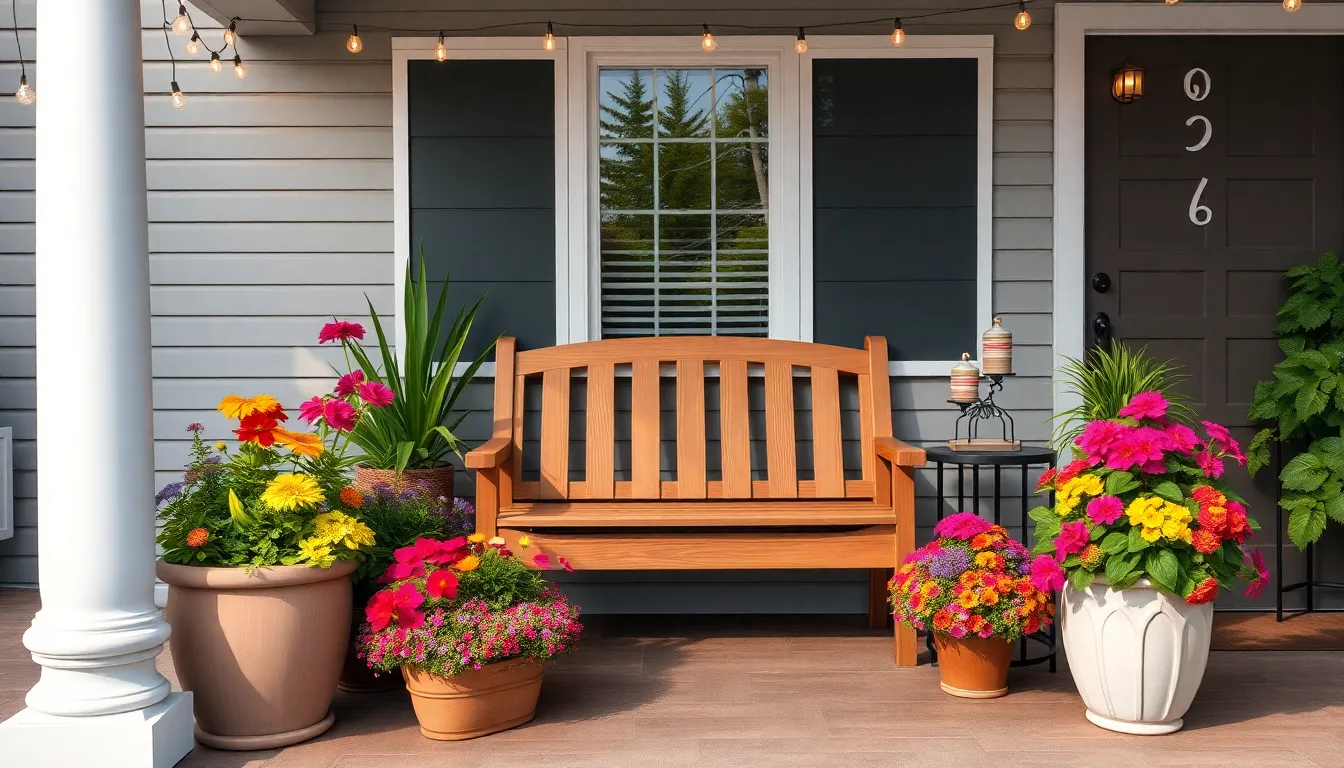
Transforming your front porch bench into a stunning focal point requires thoughtful integration with surrounding decorative elements. We’ll show you how strategic placement of planters, lighting, and side tables can create a cohesive outdoor space that welcomes guests and enhances your home’s curb appeal.
Pairing with Planters and Greenery
Plants and flowers around your front porch bench soften the area and bring natural beauty to the space. Choose planters that complement your bench’s style—rustic wooden planters pair beautifully with rustic modern benches, while sleek metal pots suit industrial or mixed metal and wood designs perfectly.
Greenery frames the bench effectively, creating a cozy nook that adds vibrant color and interesting texture to your porch. Position larger planters at the corners of your seating area to establish boundaries, then fill in with medium-sized containers featuring seasonal blooms like petunias, marigolds, or ornamental grasses.
Symmetrical arrangements work exceptionally well for traditional porch designs. Place matching flower pots on either side of your bench entrance to create a balanced, welcoming look that draws the eye naturally toward your seating area.
Consider vertical elements like tall planters with architectural plants such as boxwood topiaries or ornamental grasses. These additions provide height variation and create visual interest while maintaining the welcoming atmosphere you’re working to achieve.
Adding Side Tables and Lighting
Side tables next to your bench increase functionality by providing surfaces for drinks, books, or decorative items. Opt for tables that match your bench materials and design aesthetic to maintain a cohesive appearance throughout your porch space.
Weather-resistant materials like powder-coated metal, treated wood, or synthetic wicker ensure your side tables withstand outdoor conditions. Position them within easy reach of seating areas while maintaining comfortable traffic flow around your porch entrance.
Lighting around your bench area enhances ambiance and extends usability after dark. String lights, wall sconces, or decorative lanterns create warm, inviting atmospheres perfect for relaxing evenings outdoors.
Solar sconces eliminate the need for electrical work while providing consistent illumination throughout the night. Mount them strategically on walls flanking your bench or on nearby columns to create pools of welcoming light.
Warm-toned LED bulbs in your lighting fixtures establish cozy vibes that make your porch irresistible to family and guests. Consider dimmable options or multiple lighting layers to adjust the atmosphere based on different occasions and times of day.
Conclusion
We’ve explored countless ways to transform your front porch with the perfect bench that reflects your personal style and meets your practical needs. From selecting durable materials to choosing the right size and incorporating thoughtful accessories your bench can become the centerpiece that welcomes guests and creates lasting first impressions.
Remember that the best front porch bench combines functionality with aesthetic appeal while withstanding the elements year-round. Whether you choose a rustic wooden design modern metal option or vintage piece the key lies in matching it to your home’s architecture and your lifestyle requirements.
With proper planning thoughtful placement and complementary décor your front porch bench will serve as more than just seating—it’ll become an inviting outdoor retreat that enhances your home’s curb appeal for years to come.
Frequently Asked Questions
What materials are best for front porch benches?
The best materials for front porch benches include teak wood for durability, cedar and pine for affordability, and composite materials for low maintenance. Metal options like aluminum and wrought iron offer modern aesthetics and longevity. Synthetic wicker provides weather resistance, while hardwoods like oak and mahogany deliver traditional charm. Choose based on your climate, budget, and style preferences.
How do I determine the right size bench for my porch?
Measure your porch area accurately and ensure at least 3 feet of walkway space for comfortable movement. Consider the bench’s proportions relative to your porch size and architectural style. Plan for additional elements like side tables and planters. The bench should fit harmoniously without overwhelming the space or restricting traffic flow.
What’s the difference between built-in and freestanding benches?
Built-in benches are permanent fixtures that integrate seamlessly with porch architecture, often providing storage and maximizing space efficiency. Freestanding benches offer flexibility in placement and can be moved or replaced easily. Built-ins work well for corner seating and full-width installations, while freestanding options allow for seasonal rearrangement and style changes.
How can I make my porch bench weather-resistant?
Choose weatherproof materials like high-density polyethylene plastics, powder-coated metals, or treated woods. Apply protective coatings such as waterproof sealants for wood and powder coating for metals. Select designs with drainage features to prevent water accumulation. Regular maintenance and proper storage during extreme weather conditions will extend your bench’s lifespan.
What cushions work best for outdoor bench seating?
Select cushions with quick-dry foam and solution-dyed fabrics for durability and weather resistance. Choose colors that coordinate with your home’s exterior and bench style. Ensure proper size matching for a polished appearance. Consider removable covers for easy cleaning and storage during harsh weather. Add throw pillows for extra comfort and seasonal styling.
How should I position my front porch bench for maximum impact?
Position benches where they’re most visible, such as near the front door or along the porch’s longest wall. Maintain comfortable traffic flow while creating focal points. Consider views and privacy when placing the bench. Balance the placement with other porch elements like planters and lighting to create an inviting conversation area.
What colors and finishes work best for porch benches?
Bold colors like bright red, deep navy, or sunny yellow create striking focal points against neutral exteriors. Natural stain finishes enhance wood grain while providing weather protection. Choose colors that complement your home’s existing palette. Apply protective coatings to maintain appearance and extend lifespan, making future maintenance easier.
How can I enhance my bench area with décor?
Add planters with greenery that matches your bench style, incorporate functional side tables, and install appropriate lighting like solar sconces or string lights. Use weather-resistant materials for all accessories. Create cohesion by selecting décor elements that complement your bench’s design and your home’s overall aesthetic for a polished outdoor space.

